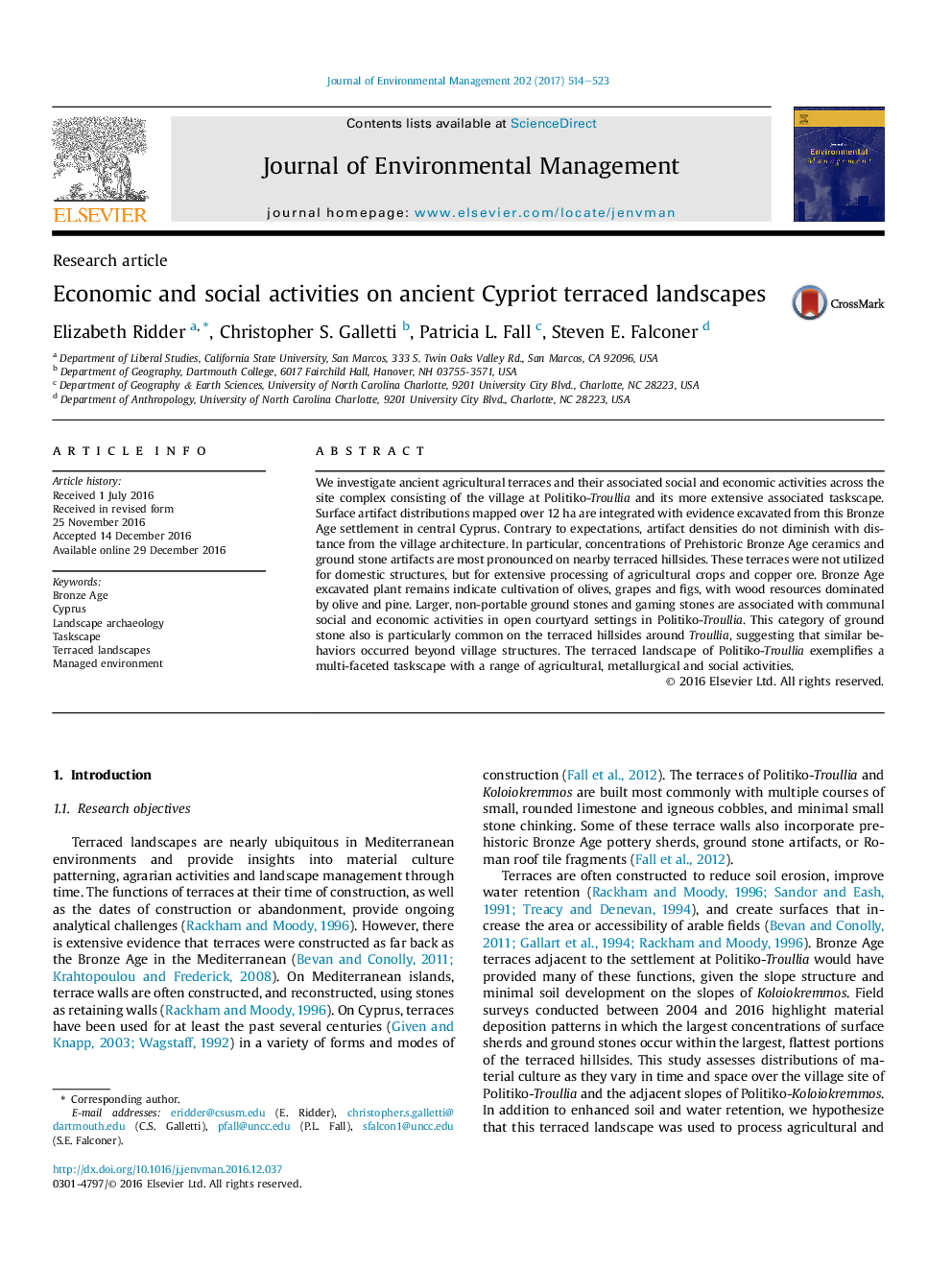| Article ID | Journal | Published Year | Pages | File Type |
|---|---|---|---|---|
| 5116869 | Journal of Environmental Management | 2017 | 10 Pages |
â¢An ancient terraced landscape reveals social and economic activities on an extramural taskscape.â¢Surface artifact distributions document long-term anthropogenic landscape utilization.â¢Excavated and survey evidence provides key insights for behavioral inferences.
We investigate ancient agricultural terraces and their associated social and economic activities across the site complex consisting of the village at Politiko-Troullia and its more extensive associated taskscape. Surface artifact distributions mapped over 12Â ha are integrated with evidence excavated from this Bronze Age settlement in central Cyprus. Contrary to expectations, artifact densities do not diminish with distance from the village architecture. In particular, concentrations of Prehistoric Bronze Age ceramics and ground stone artifacts are most pronounced on nearby terraced hillsides. These terraces were not utilized for domestic structures, but for extensive processing of agricultural crops and copper ore. Bronze Age excavated plant remains indicate cultivation of olives, grapes and figs, with wood resources dominated by olive and pine. Larger, non-portable ground stones and gaming stones are associated with communal social and economic activities in open courtyard settings in Politiko-Troullia. This category of ground stone also is particularly common on the terraced hillsides around Troullia, suggesting that similar behaviors occurred beyond village structures. The terraced landscape of Politiko-Troullia exemplifies a multi-faceted taskscape with a range of agricultural, metallurgical and social activities.
Graphical abstractDownload high-res image (330KB)Download full-size image
